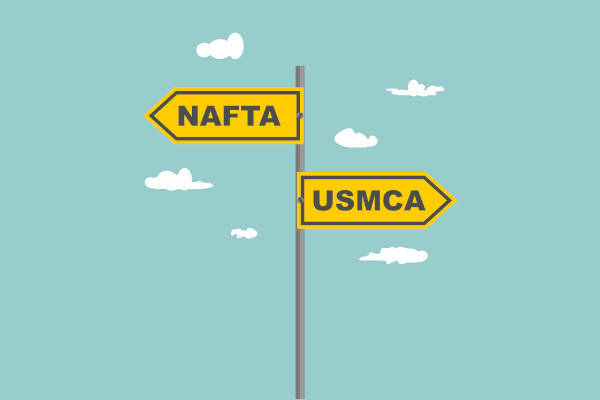United States – Mexico – Canada, which replaces the North American Free Trade Agreement, the Naphtha, which moves trillions of dollars each year. This commercial agreement is also known as “Naphtha 2.0” and was signed in 2018, after negotiations started in 2017.
readalso:Paris Agreement
What is this agreement?
The USMCA corresponds to a free trade agreement between the United States, Canada and Mexico which modernizes the old agreement, called NAFTA, which had been in force since 1994. The renewal of the agreement was made official by the current president of U.S, Donald Trump; the president of Mexico, Enrique Peña Nieto; and the prime minister of Canada, Justin Trudeau, during the Summit of G20, in Buenos Aires, Argentina.
The deal was closed first of formbilateral between the United States and Mexico. After lengthy negotiations, Canada, through its prime minister, expressed satisfaction with the proposed changes and decided to participate in the agreement.
Lookalso: OECD
USMCA Motivation and Purpose
The renewal of the trade agreement between the three nations was a request for Donald Trump, who claimed to see damage to US economic sectors. These losses would have been generated by deficits in trade between the United States and Mexico and this caused the loss of millions of jobs in the United States.
Believing that NAFTA has made US trade less competitive, making the country lose industries to others, Trump, by proposing renewal, intended to protect the US market and liberalize too much. Thus, the main objective of replacing the agreement is based on the protectionismfrom United States, proposing a “freer” market, a safer trade that favors economic growth.
USMCA X Naphtha

The USMCA is an agreement that replaces NAFTA.
O Naphtha, North American trade agreement, represented, for twenty-four years, a treaty that represented free trade between the United States, Canada, Mexico and Chile, as an associated country. Ratified in 1993, this agreement was intended to facilitate trade between countries that adhered to it, removing some trade restrictions without trampling the internal laws of each nation.
Unlike some other agreements, such as the European Union, the Naphtha did not allow the free movement of people, but of goods and products, ending trade barriers between countries and uniting their interests in order to expand the market and increase productivity.
NAFTA's main objectives were:
Reduce customs barriers with regard to fees charged on imported products;
Favor the circulation of goods and services between countries;
Promote increased investment opportunities among countries;
Protect intellectual property within each territory;
Offer fair conditions for competition in the free trade area.
NAFTA, throughout the period in which it was in force, suffered several criticisms despite moving the economy among its member countries. It is worth noting that there is a huge economic disparity between these countries. The Mexican economy is heavily dependent on the US economy and many believed that this agreement further intensified this dependency.
Another problem concerns the issue of unionslabor from Mexico, who are against the agreement because they believe the United States has an advantage in the prices of agricultural products produced in Mexico.
On the other hand, the United States believed that its economy was being harmed, as many industries moved to Canada and Mexico due to the attractiveeconomic in relation to the low taxes levied in these areas and the cheaper labor. Canadians, finally, criticized the fact that the commercial partnership with the United States sometimes limited trade with other countries.
To learn more, go to: Naphtha.
What changes?
President Donald Trump proposed some changes in relation to the trade agreement, establishing rules for trade between countries that, according to him, would revolutionize the three nations, guaranteeing innovation and prosperity. The main changes that occurred in relation to the old agreement, NAFTA, now renewed by the USMCA, are:
Name |
The old agreement, called NAFTA, now gives way to the USMCA. |
automotive sector |
The new agreement is intended to prevent industries from moving to places with cheaper labor. The idea is that about 75% of the parts of a car are manufactured in the United States by workers who earn an average of 16 dollars an hour. |
dairy sector |
Canada agreed to lower barriers in the dairy sector as the US government branded the protection of dairy products unfair with high import tariffs. Thus, the dairy market between Canada and the United States is expanded. |
Agreement validity |
Unlike NAFTA, which did not have a specific time to be in force, the USMCA will expire in sixteen years, therefore, an expiration clause was established. |
Intellectual property |
Intellectual property protection already existed. The new agreement proposed to increase this protection, offering it to pharmacists and agricultural innovators. This protection also extends to the copyright of writers and composers. |
E-commerce |
The USMCA vetoes customs duties for digitally distributed products such as games and electronic books. |
By Rafaela Sousa
Graduated in Geography


